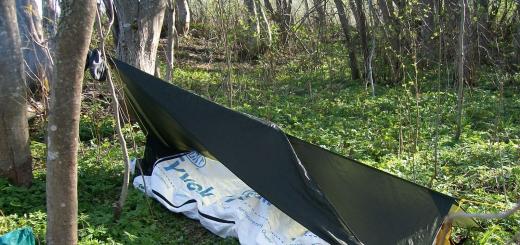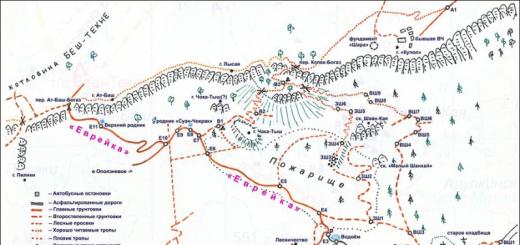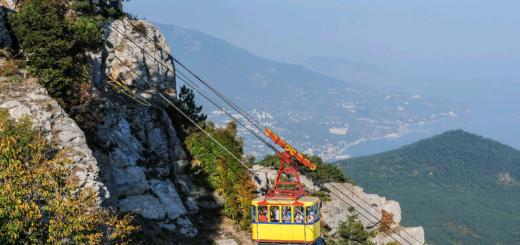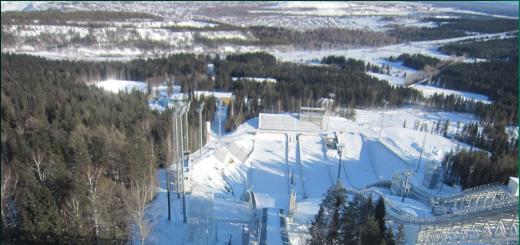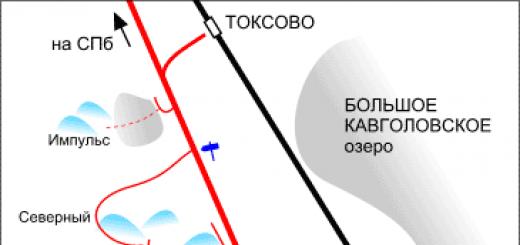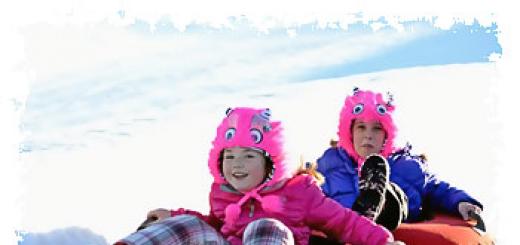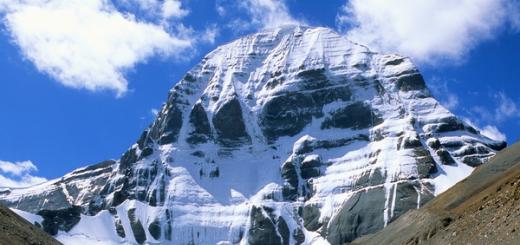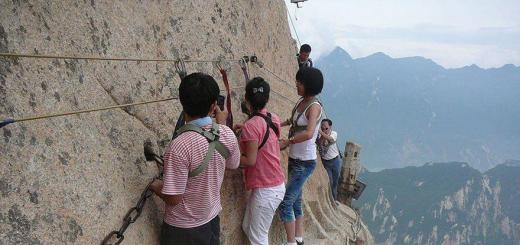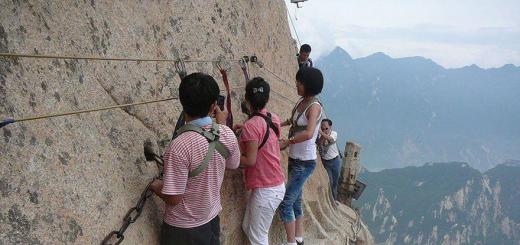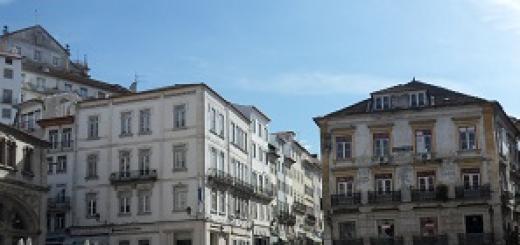October 25th, 2013
The Chicago Water Tower is considered almost the only building in Chicago that survived the great fire of 1871. This, of course, is not entirely true: this is the only surviving public building and one of the few that have survived to this day. One way or another, the Chicago Water Tower has become a symbol of old Chicago and the city's reconstruction after a fire.

The Chicago Water Tower was built in 1869 in the fashionable European style of the time. medieval castles in the American view ".

Once the tower, reaching 47 meters in height, was the tallest building in the area.
Chicago Water Tower in 1886. 
Today, against the backdrop of modern skyscrapers, it looks quite small.

Photo taken by Dori ( [email protected])
The water tower is part of the complex, which also includes a pumping station.
Pumping station. 
This station was built to provide the city with clean water. Prior to that, water came from the coastal waters of Lake Michigan, which were polluted by the Chicago River that flows into it (into this river, sewage from numerous Chicago plants and factories was discharged).
Chicago River. 1905 g. 
Source: Archives of the Library of Congress.
Water was to be supplied to the pumping station from special reservoirs located in the lake at a distance from the shore.
View of Chicago from Lake Michigan. 
This idea was not particularly successful - the tanks themselves quickly became contaminated. The problem was solved only by turning the course of the Chicago River back (yes, long before Brezhnev, the idea of turning the rivers not only existed, but was even successfully implemented!).
The Magnificent Mile is one of the most famous shopping streets in the world, located on the Michigan Avenue section north of the Chicago River. There are many shops on the Magnificent Mile, shopping centers, restaurants, hotels and Chicago attractions. The street is surrounded by huge skyscrapers and remarkable buildings.
The neighborhoods around the Magnificent Mile are considered some of the most expensive and prestigious in Chicago. The wide sidewalks are always crowded. Luxury shops, boutiques and restaurants are geared primarily towards the wealthy as well as tourists. All well-known retail brands are present on the Magnificent Mile.
The oldest building along the Magnificent Mile is the Chicago Water Tower. The tower was built in 1869. The pumping station and tower looks a little out of place among the many high-rise buildings. It is a highlight in the heart of downtown Chicago and a popular tourist attraction. The Water Tower is one of the few structures that survived from Chicago after the Great Chicago Fire of 1871. The building symbolizes the resilience of Chicago. They tried to demolish the water tower several times: in 1906, 1918 and 1948, but each time the defenders were able to defend the symbol of Chicago.



Interesting buildings located on the Magnificent Mile (year of construction, height in meters):
- Wrigley Building (1924)
- Tribune Tower (1925, 141 m)
- Water Tower Place (1975, 262 m)
- Olympia Center (1986, 221 m)
- Chicago Place (185 m)
- One Magnificent Mile (205 m)
- 900 North Michigan (1989, 265 m)
- John Hancock Center (1970, 344 m)
- Park Tower (2000, 257 m)
- Drake Hotel (1920)
- Allerton Hotel (1924, 110 m)
- Palmolive Building (1929, formerly Playboy Building)
Chicago- the third most populous city in the United States; the largest metropolis in the state of Illinois, stretching along the shores of Lake Michigan. Chicago is often referred to as the "second city" or "city of the winds": the "second city" means economic leadership (after New York), and he received the nickname "city of winds" due to fluctuations in the city government (and not because of strong winds, as many think)... The nickname given by politicians became so entrenched that it became the second name of Chicago. This city is full of audacity and vanity, it has something mesmerizing ... The powerful architecture of Chicago hides Mexican, Polish, Vietnamese and other ethnic residential areas that you can wander through. It is a city of blues, jazz and rock clubs open every night.
Video: Chicago
Basic moments
This is where things like gang, electric blue and, by all accounts, pizza were born. Journalist Henry Mencken called Chicago “ literary capital United States, ”and writers from Nelson Algren to Nobel laureate Saul Bellow have maintained that reputation. The Second City Players comedy troupe brought in actors such as Steve Martin, John Belushi, Dan Aykroyd, and spawned the evening comedy show Saturday Night Live on American television. (Saturday Night Live).
The nickname of Chicago as a "windy city" comes from the corsair manners of Chicago politicians (chattering bills), and from the exorbitant praise of his 1893 World Columbus Exposition. And although a piercing wind blows from the lake here, this is not why the city received such a nickname.

A pleasant surprise for many who come here for the first time will be a strip of sandy seaside 24 km long and parkland along the lake in this purely commercial city. Unlike other cities on the Great Lakes, in Chicago most of the land near the lake is set aside for parks and residential areas, there are no industrial enterprises. Sunbathing, swimming or fishing is just a few blocks away.
The city, which gave the whole world an example of the construction of skyscrapers, began to do this against its will. In 1871, a fire devastated mostly wooden Chicago, which was barely 30 years old, leaving 100 thousand city dwellers homeless. I had to hastily rebuild, erecting fireproof houses with the prudent use of the area available for building. The architects who developed methods of constructing a building around a metal frame, so that it could rise to the intended height, maintaining the style and without losing sophistication, laid the foundation for the so-called Chicago School of Architecture.

It included Louis Sullivan, Daniel Burnham, and later Mies van der Rohe. Frank Lloyd Wright also worked in Chicago, but he is best known for building residential buildings.

According to the 2013 census, the population of Chicago is about 2.7 million, which by any measure indicates big city, however, it is much inferior to New York, which forces the "second city" not only to take a defensive posture, but also encourages action. The local architectural tradition itself inevitably led to the desire to erect something more grandiose than the New York Spitz, and finally, the Willis Tower became the tallest building in the world, until in 1996 it was surpassed by the twin towers of the Petronas oil company in Kuala Lumpur, Malaysia.
The Chicago Symphony Orchestra is one of the finest orchestras in the world and the Art Institute of Chicago is a world famous museum. But the townspeople themselves, not striving for the sophistication of the residents of Manhattan, are distinguished by a benevolent and ironic attitude to life, which makes them more accessible in communication.
It is difficult to get rid of the old image of a gangster city, but you will not find a monument to Al Capone here, and the influence of the mafia here is the same as in other wealthy cities in America. The monetary rulers here are immigrants from England, although the tone of public life is set by the descendants of the Irish, Poles, Germans, Italians, Negroes and Jews.


 Sculpture of the Flamingo Chicago (Calder's Flamingo)
Sculpture of the Flamingo Chicago (Calder's Flamingo)
(Chicago Transit Authority, CTA) has an excellent bus service, and the taxi ride is not too burdensome, but for once we advise you for a trip around the city, with the exception of a crowded center, to rent a car if you are going to stay here for more than one day. It's easy to navigate: the city center is called Loop ("a loop") due to the elevated railway track that surrounds the business district south of the river Chicago. Other urban areas are indicated according to their location relative to the center: North Side ("northern"), South Side ("Southern") and West Side ("west").
History

At the end of the 17th century, the Potawatomi Indians gave the area the name Chekagou. (Checagou) which means "wild onion". There were once swamps in the vicinity. The turning point for the emergence of the city was the day of October 8, 1871, when (as the legend says) Mrs O'Leary's cow knocked over the kerosene lamp that started the Great Chicago Fire, which burned out the entire middle of the city and left 90,000 people homeless.
“Damn,” the town planners said. “Looks like we shouldn't have built everything out of wood. It burns. " And they rebuilt using steel, and created space for the implementation of bold ideas - they built new buildings, for example, the world's first skyscraper, which suddenly appeared in the sky in 1885.
Al Capone's gang ruled here in the 1920s, corrupting political power. The local government paid the price: 30 members of the council were imprisoned in 1970.
For the past half century, the biggest name in Chicago has been Daley: Richard Daley was mayor of the city from 1955 to 1976, and his son Richard M. Daley served in a leadership position from 1989 to 2011.

Chicago landmarks

Top attractions in Chicago can be found in or around the city center, although visits to more remote areas like Pilsen and Hyde Park won't leave you unhappy either.
The streets of the city are lined up and numbered. Madison street (Madison) and State Street (State St) in Chicago Loop (Loop)- this is the center, when you go north, south, east or west from this place, each 800-unit increase in the street number corresponds to 1.61 km. For example. after Chicago Avenue (Chicago Ave (800 N)) goes north avenue (North Ave (1600 N)) then fullerton avenue (Fuilerton Ave (2400 N))- having reached this point, you will be located 1 ", 83 km north of the center.
Michigan Avenue

Instead of a bustling city center, we advise you to start building your idea of the city from its most beautiful street, although business-like, but more measured. Chicagoans call the tree-lined stretch of street north of the Loop and the river up to Oak Street the Magnificent Mile. (Magnificent Mile)... There are the largest high fashion stores, jewelry stores, department stores, art galleries and bookstores. The street has acquired unique look so when McDonald's, headquartered in Chicago, decided to open a branch here, local merchants insisted that the exterior of the building blend in with the surroundings.
Most notable is the huge, blued-colored 100-story John Hancock Center with its striking braced frame. Before us is a real vertical street, soaring up 337.5 m. The first five floors are occupied by shops, then half a dozen floors are given for a parking lot, and then there are office and living quarters, where a supermarket and a swimming pool are provided for residents. The 94th floor observation deck overlooks the Michigan Lakeside, the Indiana steel mills behind Loop, the Wisconsin-facing shores and lowland West Side residential areas.


A block east of North Michigan Avenue lies the bustling Rush Street with summer cafes, nightclubs, restaurants and taverns that comes alive at dusk. Chicago Avenue and Michigan Avenue are home to an amazing white limestone water tower that has become a historic landmark. It was erected in 1869 to house a pump that pumped water from the lake, and is the only public building that survived the fire. Today there is a park around it.
Water tower area (Water Tower Place; 845 North Michigan) is a shopping center with waterfalls along escalators that take visitors to shops and restaurants spread over seven floors of the building. Four blocks south, Ontario Street is lined with rows of art galleries that display lavish contemporary art.



The Tribune Tower stands out for its pseudo-Gothic spitz and portico, between which 30 floors fit. Erected in 1925 for the local newspaper The Chicago Tribune, it was the scene of America's most famous architectural competition. Many leading architects (233 applications received from 23 countries) presented their projects, and among the losers were Walter Gropius, the creator of the Bauhaus - a famous educational institution and architectural and artistic association in Germany, and the great Finnish architect Ero Saarinen. Having secretly convinced the world that modern buildings should now have a modern look, the tower appeared to be an unusual and even cute eccentricity.
We have a great variety of styles in front of the skyscrapers near the Chicago River, starting from the bridge on Michigan Avenue. The whitish yellow building with the clock tower to the north of the bridge is Wrigley, the renowned chewing gum manufacturer, especially beautiful at night under the spotlights.
To the west along the river are the twin towers of the Marina City residential complex, resembling huge cobs of corn.
Rounded reinforced concrete towers, where the living quarters on the upper floors are like slices of cake, descend towards the river. They serve as a harbor for 500 local residents 'ships or entrepreneurs' boats that take them to work from the suburbs. north coast lakes. Contrasted with them is the multi-storey panel building of steel and glass by Mies van der Rohe, located behind, company-owned IBE.
 Buckingham Fountain is one of the largest in the world; "gate" of Chicago
Buckingham Fountain is one of the largest in the world; "gate" of Chicago
Loop

Loop - an area together with the El elevated railway (elevated railroad), which girdles it along Wabash Avenue in the east, Ozernaya in the north, Rodnikova in the west and Van Buren in the south, symbolizes American efficiency. Lasalle Street, the heart of the financial and banking district, resembles a canyon like New York's Wall Street. The main downtown department stores are concentrated on State Street and Wabash Avenue. One of them, the Carson-Peary-Scott building, is a place of pilgrimage for architectural specialists, attracting them, like the first buyers in 1904, with Louis Sullivan's unusually openwork metal ornament above the entrance from Madison Street, as well as unprecedented for that time elongated along the windows. Unfortunately, the store closed in 2007.

The most notable feature of the Chicago business district is that in its many squares, plazas, there is no place for statues. famous people and modern sculptures with mosaics. This design, called "areal art" (plaza art), began with a massive steel unnamed sculpture by Picasso (1967) in front of the Richard Joseph Daley Civic Center (Washington and Dearborn streets), a city hall and courthouse complex named after the late mayor. Like a high-rise courthouse, Picasso's 15-meter sculpture is made of weather-resistant steel that takes on a rusty color. For those who are trying to understand whether a woman or a horse is in front of them, Picasso himself has already answered that this, they say, is akin to trying to understand what the bird is singing about. And yet this statue attracts admirers of the artist and townspeople to the square, who love to refresh themselves here with sandwiches.
Mosaic "Seasons" M. ChagallAmong other notable examples of "areal art" one can single out Chagall's "Seasons" - a mosaic 21.5 m long on the First People's Square (First National Plaza; Monroe and Dearborn streets); bright red, 16 m high abstract sculpture "Flamingo" (Flamingo Stabile; Adams and Dearborn streets) Alexander Calder, decorating the Federal Center designed by Mies van der Rohe, considered by some to be the finest public building complex in the country; and perhaps the most challenging Batcolumn sculpture (at the Lupa border outside the Social Security Administration building; 600 West Madison Street) pop art representative Claes Oldenburg, 30.5 m high, assembled from 1608 welded steel elements.



The Willis Tower rises on the edge of the Loupe (Wacker Drive and Adams Street), 110 floors soaring up to 443 m, which allowed it at one time to become the tallest building in the world. Today the building consists of nine towers of the architectural agency COM (Skidmore, Owings & Merrill - SOM), resembling square cigarettes gathered together, looking out of the "pack" at different lengths. The steel frame is covered with blackened aluminum, and the 16,000 windows are painted bronze. On the 103rd floor there is viewpoint... After visiting Hancock Tower during the day, come to the Willis Tower site at night to admire its views.
Most of the restaurants and cafes in the Loop area are designed to accommodate crowds of office workers at lunchtime.
Chinatown

The charm of Chinatown Chicago can be truly experienced as you walk from bakery to bakery, inhaling the aroma of nut tarts and macaroons, shopping for Hello Kitty little things. Wentworth Avenue (Wentworth Ave), south of Sermak Road (Cermak Rd), - the trading heart of old Chinatown; Chinatown Square (Chinatown Sq), along Archer Avenue (Archer Ave), south of Semark, is a newer commercial area. It can be easily reached in 10 minutes from Loop by train. Take the CTA Red Line to the Cermak-Chinatown stop.
Lake Shore Drive
Driving along this road gives you the opportunity to admire the surroundings. On the South Side, from Jackson Park, pass the sailboats docked in Chicago Harbor at Grant Park, past the seaside of Oak Street, and arrive at Lincoln Park on the North Side and the boats at Belmont Harbor. If you move in southbound, the road leads you to the place of the greatest concentration of buildings of the current millennium, located in the Millennium Park.

The Royal Fountain consists of two glass-brick towers enclosing a shallow granite basin. The faces of thousands of Chicagoans change on video screens behind glass blocks; almost every 5 minutes the lips on the screen fold into a tube and "release" a stream of water beating from the tower.
The Jay Pritzker Pavilion, a summer concert venue for classical music, was designed by architect Frank Gehry. The pavilion is fenced with corrugated stainless steel sheets that resemble huge ribbons curling from the stage. Gehry was also responsible for the construction of the stainless steel British Petroleum Wavy Footbridge.
But the most beloved building (and the newest symbol of the city) on Millennium Square - a twisted, three-storey building, sculpture "Cloud Gate" ("Cloud Gate")... Anish Kapoor's curved, mirrored surface is a cross between a work of art and a crooked mirror from the Laughter Room, and has been fondly nicknamed "the bean." (the bean).


Lincoln Park is worth visiting separately for its menagerie. There is an amazing monkey house, but what attracts most of all is the idea of introducing domestic animals and birds, such as pigs, cows, goats, ducks and chickens, to the city kids, instead of tropical exoticism, which they saw only roasted and are familiar only with cats, dogs and sparrows. Likewise, Lincoln Park's greenhouse, besides a fine selection of orchids and striking African and South American trees, delights the eye with the unpretentious beauty of marshmallow, hyacinths, snapdragons and daisies in Grandma's Garden.
Museums in Chicago
Museum town in Grant Park (1300 South Lake Shore Drive) brings together three remarkable exhibitions. Shedd's Marine Aquarium (Shedd Aquarium; tel .: 312-939-24-38; www.sheddaquarium.org) is one of the largest in the world. It contains 7,500 species of fish, including a magnificent collection of 350 Caribbean coral reef dwellers.


If you are lucky, you will see scuba divers feeding large fish. Field Museum of Natural History (tel .: 312-922-94-10; www.fieldmuseum.org) also allows visitors to "play" with some of its exhibits, although at first you will be frightened by the huge restive elephants beating in the main hall.
(tel .: 312-922-78-27; www.adlerplanetarium.org) offers colorful multimedia views of the sky. In addition to the detailed, but now commonplace, exhibitions highlighting space exploration, the exhibit of astronomical instruments attracts attention, dating back to the times when people still believed that the Earth was flat.
Museum of Science and Industry (South Lake Shore Drive and 57th Street; Tel: 773-684-14-14; www.msichicago.org)- the most visited in the city, as you do not just stand and watch, but walk among the exhibits and do something. Descend into a coal mine, walk through a huge model of a human heart, visit a captured German submarine during the Second World War, press buttons and pull levers labeled "Do not touch."
 (Michigan Avenue & Adams Street; Tel: 312-443-36-00; www.artic.edu), which was originally an art school, now belongs to the best American museums. In less than a century, a collection has been assembled here, where the collection of the Impressionists and Post-Impressionists stands out. The new, modern wing of the building displays works by Matisse, Picasso, Georgia O "Keefe and Edward Hopper.
(Michigan Avenue & Adams Street; Tel: 312-443-36-00; www.artic.edu), which was originally an art school, now belongs to the best American museums. In less than a century, a collection has been assembled here, where the collection of the Impressionists and Post-Impressionists stands out. The new, modern wing of the building displays works by Matisse, Picasso, Georgia O "Keefe and Edward Hopper. Electronic tickets and discount cards

Major attractions including the Art Institute, Shedd Aquarium (Shedd Aquarium) and Willis Tower, allow you to purchase tickets online. The advantage is that, firstly, you are guaranteed entry, and secondly, you do not stand in line. Disadvantage - you have to pay for the service, the fee can range from $ 1.50 to $ 4 per ticket (sometimes for the whole order), and at times the online queue is no shorter than the live one. Our suggestion: consider buying online tickets in the summer and for some large exhibitions, otherwise this is not necessary.
Chicago offers several discount cards that will also allow you to bypass the lively Go Chicago Card queues (www.gochicagocard.com)... Allows you to visit attractions and attractions an unlimited number of times for a fixed fee; convenient if you visit these places one, two, three, five or seven days in a row.
CityPass (www.citypass.com) Gives access to the city's five major magnets, including the Shedd Aquarium and Willis Tower, for nine days; this is the best option if you prefer a leisurely pace of sightseeing.
Leisure
Among the 552 parks in Chicago are public golf courses, ice rinks, swimming pools and more. The events are free or very inexpensive, and the equipment you need can almost always be rented. Chicago Park District conducts various shows; golf information (Tel: 312-245-0909; www.cpdgolf.com) need to be looked at separately.
Bicycle
Cycling along the 29.77 km path along the lakeside area is a wonderful way to see the city. Bicycles are rented by two companies. The cost is about $ 10 per hour or $ 35 per day (helmet and lock included)... Both companies offer two to four hour tours (from $ 35 to $ 60, including bicycles) with a walk in the lakeside area, drinking beer, eating pizza and sightseeing Obama (highly recommended!)... Active Transportation Alliance (www.activetrans.org) provides a list of cycling events taking place in the city.
Cycling Chicago (Bike Chicago) (Tel: 888-245-3929; www.bikechicago.com; 239 E Randolph St; 6.30am-8pm Mon-Fri, 8am Sat and Sun, closed Saturday and Sun November to March) Quite a separate organization, it has its branches in different places. The main one is in Millennium Park, another one is at the naval pier. Bobby's Cycling (Bobby 's Bike Hike) (Tel: 312-915-0995; www.bobbysbikehike.com; 465 N McClurg Ct; 8.30-19.00 June to August, closed December to February) Energetic and successful company. The office is located on Ogden Slip (River East Docks).
Water sports
Dive, build sandcastles or sunbathe on any of the 30+ beaches in Chicago. Lifeguards patrol the shore during the summer season. Step into the Chicago Park District (www.chicagoparkdistrict.com) to get advice before diving. North Avenue Beach (North Avenue Beach) and Oak Street Beaches (Oak Street Beach) located close to the center. Gather all your will and focus, as the water remains chillingly cold even in July.
Ice skating

Ice rink McCormick (McCormick Tribune Ice Rink) (Tel: 312-742-5222; www.milienniumpark.org; 55 N Michigan Ave (Michigan Avenue); skate rental $ 10; late November to February) at Millennium Park lights up when the outside temperature starts to drop.
Festivals and events
In Chicago, there are some events every day, but the biggest ones are in the summer. This is what happens in the city center on weekends, unless otherwise noted. Explore chicago (www.explorechicago.org/specialeverts) can give you exact dates and other details.
St Patrick's Day Parade
www.chicagostpatsparade.com; mid-March. Local plumbers union dyes the waters of the Chicago River green (acid color) followed by a big parade.
Blues Festival
www.chicagobluesfestival.us; every year in June. This is the largest free blues festival in the world - three days of music that made Chicago famous.
Taste of Chicago
www.tasteofchicago.us; late June-early July. 10-day binge in Grant Park: band performances and lots of food.


Summer Dance (SummerDance)
www.chicagosummerdance.org; 601S Michigan Ave (Michigan Avenue); 18.00 Thu-Sat, 16.00 Sun, from early July to mid-September. Bands play rumba, samba and other world famous melodies, and fun dance lessons are held to this music. All this takes place in the Garden "Spirit of Music" (Spirit of Music Garden) in Grant Park.
Pitchfork Music Festival
www.pitchforkmusicfestival.com; day pass $ 45; mid-July. Indie bands strum in Union Park (Union Park) in three days.


Lollapalooza
www.lollapalooza.com; day pass about $ 100; early August. Up to 130 bands are scattered across eight stages in Grant Park for a three-day mega-concert.
Jazz Festival
www.chicagojazzfestival.us; beginning of September. National jazz players with big names play here on Labor Day.

Accommodation

Hotels in Chicago are not cheap. The best way save money - use special offers like Priceline or Hotwire (look for "River North" or "Mag Mile")... On weekends and on days when the city is flooded with members of any conventions (which often pass here), your chances are diminishing before our eyes, so plan ahead to avoid unpleasant surprises. The prices below are normal for the middle of the week in summer, i.e. hot, season. The tax goes another 15.4%.
B&B hotels are an excellent choice for the middle class dandy. Contact Chicago Bed & Breakfast Association (www.chicago-bed-breakfast.com; numbers $ 125-250), which represents 18 hotels. Many hotels have a minimum stay of two to three days. Renting vacation rooms in local apartments is also a good option. Contact Vacation Rental By Owner (www.vrbo.com) or Craigslist (www.chicago.craigslist.org).

Hotels in the Loop area are convenient for visiting Grant Park, museums and the business district, but the area freezes at night. Lodging in the Middle North or Gold Coast is most popular for its proximity to restaurants, shopping and entertainment. Rooms at Lincoln Park, Lake View and Wicker Park are seductive as they are often cheaper than downtown rooms while staying close enough to the turbulent nightlife cities.
Wi-Fi is free unless otherwise noted. You will pay dearly for parking in Chicago, roughly $ 45 a night in the city center and $ 22 in remote areas.
 Street cafe in Chicago
Street cafe in ChicagoFor many years, the Epicureans wrote of Chicago as a "meat backwater." Then something funny happened: the city received a ton of James Byrd awards, and gourmet magazines like Saveur called it home. best restaurants countries. Even the noisiest restaurants are beautiful here: the chefs are dreamers and great inventors, but at the same time true to traditions. The prices are fair. You can also sample the excellent ethnic restaurants, especially if you leave the center and visit one of the districts such as Pilsen or Uptown.
During the long winters, Chicagoans rely heavily on the warmth of the bars. Bars usually close by 2.00, but some of them remain open until 4.00 or 5.00. In summer, many bars open beer gardens.

Chicago Transportation

To / from airport
Chicago Midway Airport, 17.70 km southwest of Loops, connected via the CTA Orange Line ($2,25) ... Other options include shuttle buses (per person $ 24) and taxi (from $ 30 to $ 40).
O'Hara International Airport 27.36 km northwest of Loop. The cheapest and often fastest way to get to O'Hara is by taking the STA Blue Line ($2,25) Mansueto Library
Bicycles

There are 193.12 km of bike paths in Chicago. Receive free card in the city transport department (www.chicagobikes.org)... Bike racks (parking lots) lots of; the largest with showers is McDonalds Cycle Center (www.chicagobikestation.com; 239 E Randolph St (Randolph Street)) in the park "Millennium". If you don’t click on the lock, you’ll lose. For information on renting bicycles.
Cars and motorcycles
Be warned: parking on streets and in garages is expensive. If you must leave your car somewhere, try the East Monroe Garage (www.millenniumgarages.com; Columbus Dr btwn Randolph & Monroe Sts (Calambas Drive between Randolph and Monroe Streets; on day 1.4)... The traffic on the roads of Chicago during rush hour is just awful.
Public transportation
Chicago Board of Transportation (Chicago Transit Authority) (CTA; www.transitchicago.com) operates city buses and overground / underground trains (this train system is known as EI)... CTA buses run everywhere from early morning until late at night. Two of the eight color-coded trains - Red Line (Red line) and Blue Line (Blue line) O'Hara International Airport operates 24 hours a day. Other lilies operate from about 5:00 am to midnight every day. During the day, you do not have to wait for the train more than 15 minutes. Free cards are available at the station.
(called "transit card") or pay the exact amount without change (in this case the fare is $ 2.25)... When traveling by train, you must use a transit card, which is sold in vending machines at train stations. One day pass (one- / three-day pass $ 5.75 / 14) guarantees you great savings, but they can only be bought at airports and various pharmacies and currency exchange offices.

Metra commuter trains (www.metrarail.com) has 12 routes serving suburban areas with departures from four terminals located in the loop around Loop: La Salle Street station (La Salle St Station), Millennium station (Millennium Station), Union station (Union Station) and the Richard W. Ogilvy Transportation Center (and Richard At the Ogilvie Transportation Center, a few blocks north of Union Station)... Some trains run daily, some only run on weekdays during peak hours. Fares on the Metra range from $ 2.25 to $ 8.50. A full weekend pass costs $ 7.
PACE (www.pacebus.com) manages the system commuter buses combined with public transport.
Taxi
There are many taxis in Loop, driving north to Andersonville and northwest to Wicker Park / Bucktown. Minimum fare is $ 2.25, plus $ 1.80 each mile and $ 1 each additional passenger; 15% tip expected. If you leave the city, you will pay one and a half times higher than the established city tariff. Recommended Companies: Flash Cab (Tel .: 773-561-1444) Yellow Cab (Tel .: 312-829-4222).
The way back and forth
Air traffic

Chicago Midway Airport (Chicago Midway Airport) (MDW; www.flychicago.com) Small airport mainly used by local carriers such as Southwest (Southwest); sometimes flights from here are cheaper than from O'Hara airport.
International airport "O" Hara " (O "Hare International Airport) (ORD; www.flychicago.com) The largest airport in Chicago and one of the busiest in the world. United Airlines headquarters and hub for American. Most non-US airlines. as well as international flights use Terminal 5 (except Lufthansa and flights from Canada).
Buses
Greyhound (Greyhound) (Tel: 312-408-5800; www.greyhound.com; 630 W Harrison St) The main station is located two blocks southwest of the Blue Line Clinton STA stop. Buses run frequently to Cleveland (7 o'clock) Detroit (7 o'clock) and Minneapolis (9 hours) as well as small towns throughout the United States.
Megabass (Megabus) (www.megabus.com/us; southeast cnr Canal St & Jackson Blvd (southeast corner of Canal Street and Jackson Blvd)). Travels only to major cities in the Midwest. The price is often lower, the quality of service and the frequency is better than the Greyhound on these routes. The bus stop is next to Union station (Union Station).
Trains
Old Chicago Union Station (Union Station) (225 S Canal St)- transport hub for regional and interstate buses of the Amtrak company (Amtrak) (Tel: 800-872-7245; www.amtrak.com).
Some routes:
- Detroit (5 hours, three trains daily)
- Milwaukee (1 hour, seven trains daily)
- Minneapolis / Saint Paul (8 hours, one train daily)
- New York (20 hours, one train daily)
- San Francisco (emeryville) (53 hours, ONE train daily)
- Saint Louis (5 hours, five trains daily)
Low Price Calendar
in contact with facebook twitter
We dare to recommend you to visit Chicago, Illinois. This city is rightfully considered one of the most colorful cities in the world. "Windy City", as it is also called in America, is the third most populous in the United States. It is truly beautiful and interesting city... Its amazing sights are famous all over the world. Chicago is renowned for its architecture, great museums, and the best Lake Michigan food. The architectural wealth of this wonderful city is a real gem, extraordinary in its appeal and beauty.
One of the oldest buildings in the city is water tower(Chicago Water Tower), built in 1869. This is one of the few buildings that managed to survive after a terrible fire in 1871. Today, this structure looks very ridiculous next to modern buildings made of glass and steel, but it is a symbol of the city. A piece of his history that locals jealously guard and cherish.
The modern landmark of Chicago is Willis Tower(Willis Tower) or as it used to be called Sears Tower. It was the most high building in the world after its completion in 1974. You experience an indescribable sensation looking at the panorama of the city from this skyscraper. The surrounding grandeur and beauty is simply breathtaking!
Another attraction of the city is Magnificent Mile(Magnificent Mile). This is perhaps the most famous shopping street in the city. It is located north of the Chicago River. This extraordinary street is home to some of the city's most prestigious shopping malls, restaurants and hotels. The Magnificent Mile is, without exaggeration, the most luxurious street in Chicago.
After visiting the Magnificent Mile, it's time to start your museum tour. There are a lot of museums in Chicago and they are rightfully considered the best in America. You can start with Field Museum of Natural History(The Field Museum of Natural History). Where you can see dinosaur fossils, artifacts from Ancient egypt and much more. Then we advise you to visit the Chicago Planetarium to learn more about our universe, planets and stars. And, of course, gorgeous Museum of Science and Industry(Museum of Science and Industry), where you can get acquainted with all modern innovations in science and technology. This museum contains many models of airplanes, trains, cars and other works of engineering.
After walking around the city, many tourists use river tours... This is a great way to relax and admire the sights on the comfortable river trams. Experienced guides will tell you a lot of new and interesting things about this wonderful city.
There are so many in the city interesting places that it is simply impossible to tell about everyone. Chicago is an extraordinary city, but you can be sure of this only by visiting it. Believe me, having visited the "City of Winds" at least once, you will remember this trip forever!

